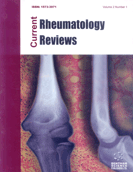Abstract
Leprosy is special not only because of its historical and biblical context and the fear it generates but because it is confined to man. As a chronic infect contagious disease, leprosy is recognized by a slow progress, high infectivity, and low pathogenicity. The development depends on multifactorial aspects, as genetical and immunological features. The epidemiology in developing countries has shown that the detection rate was still not decreased, although its prevalence has been diminished. Acute arthritis can appear and usually occurs as part of lepra reactions (types I and II), whereas chronic arthritis may result from direct infiltration of the synovia by lepra bacilli. Hansen’s disease must be included in the differential diagnosis of acute onset polyarthritis, mainly in countries where leprosy are not eradicated. In undifferentiated arthritis, anti-CCP and rheumatoid factor tests can be useful in distinguishing patients with leprosy-induced arthritis from patients with rheumatoid arthritis. The pro-inflammatory cytokine TNF-α is relevant to anti-mycobacterial immunity and plays an important role in granuloma formation. There are few published cases of leprosy in patients in use of anti-TNFα, but it is probable that this number increase and rheumatologists must be able to make the differential diagnosis.
Keywords: Arthritis, rheumatic diseases, leprosy, TNF alpha, anti-TNF alpha therapy.








